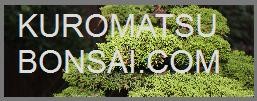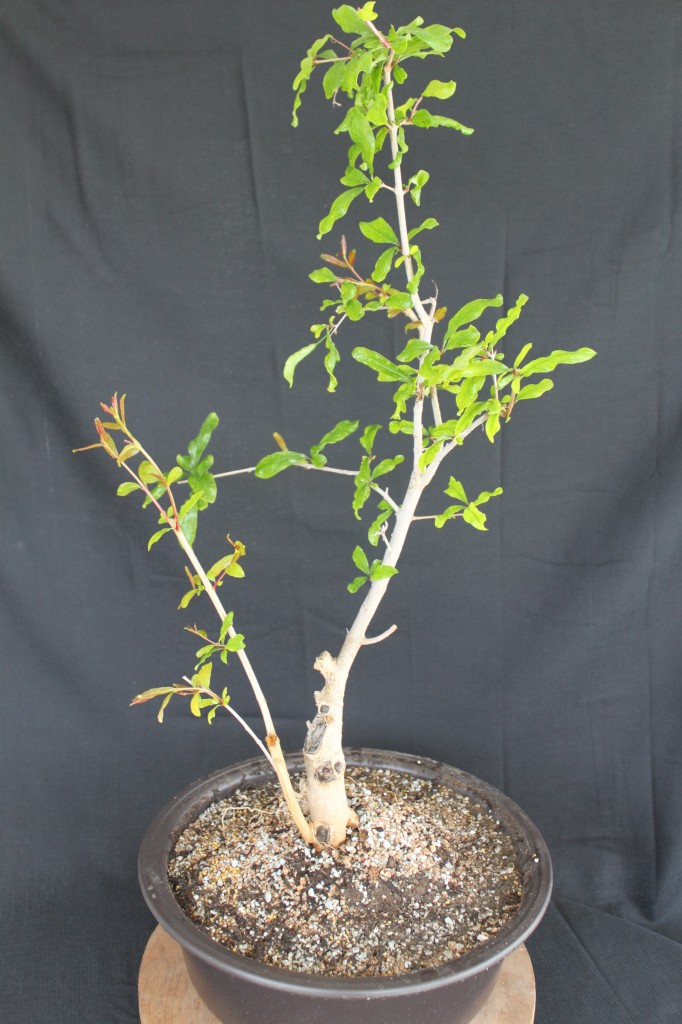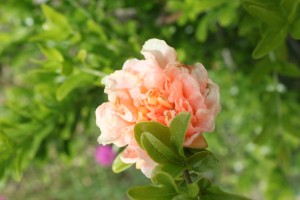Pomegranate Bonsai
Pomegranate Bonsai
As bonsai, Pomegranate trees have it all – they produce striking flowers in a range of colors, they bear fruit, and they produce thick trunks with interesting bark – a bonsai trifecta. Pomegranate trees have been cultivated as bonsai by the Japanese for many years, and have been extensively hybridized. There are many varieties, mostly varying in the size, shape and color of the flowers, as well as the size and color of the fruit.
Background:
The Pomegranate, Punica Granatum, is a smallish deciduous tree with attractive red, orange, or yellow flowers, and large, edible fruit. It was originally native to the Iranian Plateau and the lower elevations of the Himalayas, but has been spread by man throughout Europe, North Africa, and the Southwestern United States. In California, the Pomegranate, like the Mediterranean Olive and the Cork Oak, is a transplanted native. Like the Olive, the Pomegranate was known to the Ancient World, and was an important part of human agriculture. The Pomegranate was spread to China and Southeast Asia through the silk trade, and once discovered by the Japanese, was adapted for bonsai. There are more than 500 cultivars of the Pomegranate worldwide. In addition to being grown for its fruit, there are numerous versions which produce inedible fruit, and which are grown solely as ornamental plants.
Pomegranates are deciduous, but do not produce much in the way of fall color.
Where to Get One:
Just about any nursery in temperate areas with mild winters will have numerous selections. Pomegranates are also very easily grown from seed, but hang on to your patience. Pomegranates take a long time to build a thick trunk. Pomegranates can also be collected from the wild or from landscapes in most areas that have a Mediterranean climate. It is also possible to start Pomegranate from cuttings, and some growers have had success with Pomegranate cuttings taken from very thick wood.
Keeping in mind that a thick trunk is good to have and slow to grow, get the largest specimen you can afford and transport. Pomegranates respond well to a trunk chop, and will send up a profusion of growth for you to work with.
What to Do After You Get It:
If you find a well shaped specimen with a thick trunk, start shaping your bonsai. Otherwise, fatten it up until the trunk reaches the desired caliper, because Pomegranates do not thicken once they are placed in a bonsai pot. The author has a Tanyosho Pomegranate which has been in the ground for nearly five years, and the trunk is only just getting thick enough for it to make a credible bonsai, so be patient.
Soil and Potting:
Pomegranates are native to regions with alluvial soil, so it should come as no surprise that they thrive in a well draining mix built around a lot of decomposed granite. Being broadleaf trees which produce flowers and fruit, however, they still need a lot of organic nutrients. A 60% aggregate and 40% organic mix works well, but they should receive supplemental fertilizer on top of the soil – either organic supplements or an inorganic time release fertilizer designed for fruiting and flowering plants. Pomegranates should be repotted in early spring before they start pushing leaves, but they are more resilient than other deciduous broadleaf trees. They are more like Olive trees in their responses to bonsai culture, and they thrive in warm weather. Pomegranates respond well to root pruning. The roots tend to be somewhat coarse and fibrous. No special precautions need to be taken as long as the root pruning is carried out at the right time of year.
Pruning and Shaping:
Pomegranates lend themselves to any bonsai style. However, they should generally be shaped as a medium to large bonsai, due to the size and mass of the fruit. Do not wire dwarf varieties; they are prone to diebacks and are best shaped by clip and grow. Most larger varieties of Pomegranate take well to wiring, but be careful. The young growth thickens fast, and must be unwired to avoid scarring.
Styling:
Formal upright does not work. Informal and multitrunk styles work best. Semicascade is a natural style for Pomegranate. Groups may or may not work due to the size of the flowers and fruit. In fact, because of the flowers and fruit, Pomegranate tends to work better as a single specimen tree.
Pests and Diseases:
Watch for aphids, scale insects, and the caterpillar of the Pomegranate Butterfly. Other than these, Pomegranates are relatively disease free. Root rot should never be a problem as long as there is adequate drainage.
Closing Remarks:
Pomegranate bonsai is all about the fruit and flowers, but most varieties of Pomegranate have interesting bark, and can form thick trunks if given enough time.


